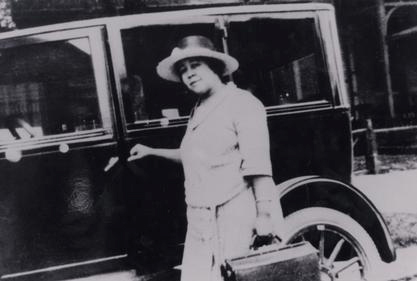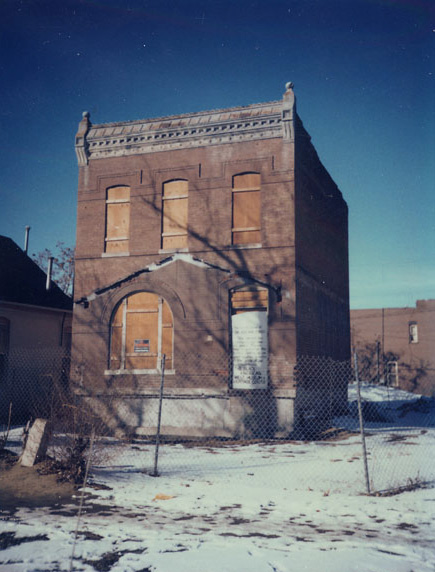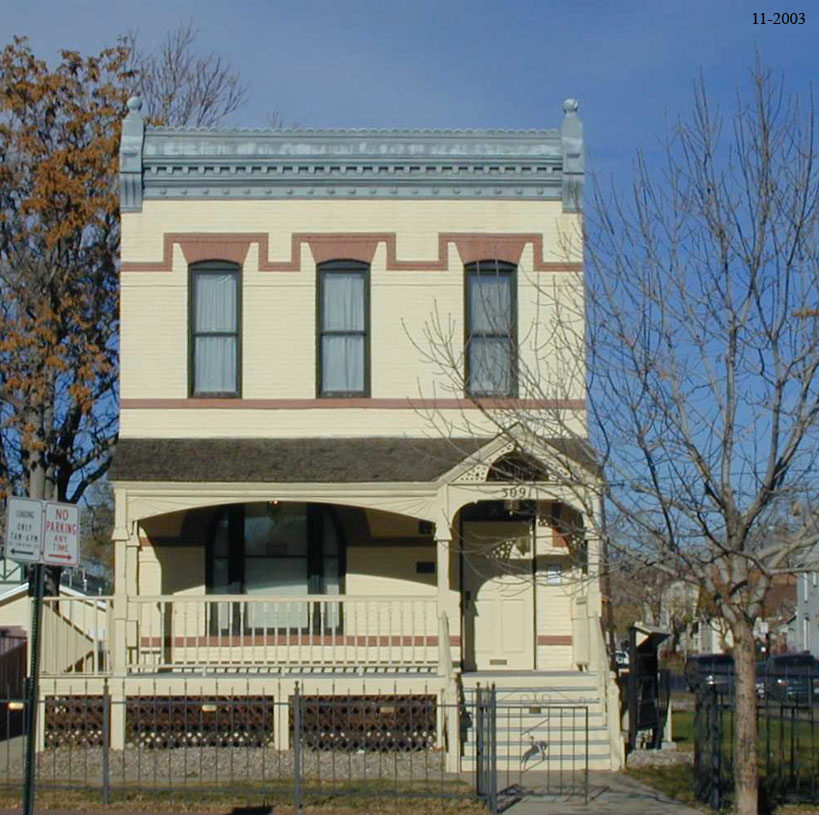Story
Dr. Justina Ford: Success Despite the Obstacles
I always thought that historic preservation simply implied that a building was saved from demolition. I was wrong. After an eye-opening internship with History Colorado’s Preservation Programs as a first semester graduate student, I realized that historic preservation is so much more than saving bricks and mortar -- it’s about preserving the memories of the people who used and loved those buildings. Additionally, losing those old buildings severs our ties to the past and the stories that evolved within those structures. Many times, they are the stories of people often forgotten in history. One of the greatest local examples of keeping our connection to the past, and one that intertwined with my family history, is the story of Dr. Justina Ford.
Dr. Justina Ford, fondly known as The Lady Doctor, came to Colorado in 1902 with her medical license in hopes of practicing medicine; however, she soon realized that it was going to be a much greater feat than she originally thought. As a woman and an African American, she was denied hospital privileges, which forced her to practice from her 1890 Italianate style home. Although this was a setback, Dr. Ford did not allow it to hinder her career. In fact, she delivered more than 7,000 babies in the Denver area during her fifty years of service. Dr. Ford primarily served the poor and non-white families of Denver and offered exceptional care even if they could not pay in cash; sometimes her patients paid her in chickens! Even when she was paid monetarily, she often used it to buy those patients coal or groceries if they were cold or hungry. As a well-respected humanitarian, Dr. Ford learned enough of several languages to communicate with her diverse group of patients. Because she cared so much for her community, she made a lasting impression on all of her patients. This included my grandmother.
Although my grandmother is almost 95 years old, she still recalls fond memories of Dr. Ford delivering my father and three of his brothers. My grandfather, an immigrant from the Philippines, farmed the land north of Denver alongside my Mexican American grandmother. For them, as farmers, money was tight. When my grandmother became pregnant and needed prenatal care, my great-grandmother suggested that she go to Dr. Ford, who was well-known in their community for helping patients who couldn’t afford to go to the hospital. In those days, my grandmother explained, non-white patients, even those who could afford it, tended to stay away from the hospitals because they were skeptical of white doctors. So my grandmother visited Dr. Ford’s home office on Arapahoe Street, an office she remembered as being very cozy with a desk and bed. Finally, the time came for the baby to be born, and Dr. Ford drove out to the house to perform the delivery. My grandmother said one time she offered Dr. Ford a cup of coffee but she quickly replied, “No, no, no, no. I don’t drink coffee.” My grandmother said Dr. Ford talked with her for hours during labor, but the baby took so long that the doctor fell asleep. Once the baby was ready though, Dr. Ford was alert and delivered the baby with ease. My grandmother gave Dr. Ford the highest praise saying she was “a very capable doctor and a great lady.”
Even though for decades people of different races in need of medical attention viewed Dr. Ford’s house and office as a safe haven, it sadly fell into disrepair in the years following Dr. Ford’s death in 1952. In 1983, the house was slated for demolition to make way for a parking lot. Quickly, community leaders, politicians, and historians worked together to save the building. They arranged to have the house moved thirteen blocks to its current location on California Street. Today, the building is home to the Black American West Museum, which celebrates the often overlooked contributions made by African Americans in shaping the American West.
Now that I see this story through the eyes of an aspiring historic preservationist, I understand the significant loss Colorado would have suffered with the demolition of Dr. Ford’s house. Our state would have been denied the chance to touch the past with a structure that played such an important role in the lives of so many people who helped to shape Colorado. As I learned this semester, the efforts of historic preservation preserved not only an interesting building but also the memory and legacy of a licensed African American female doctor who achieved success despite the obstacles.
Colorado Experience: Justina Ford



